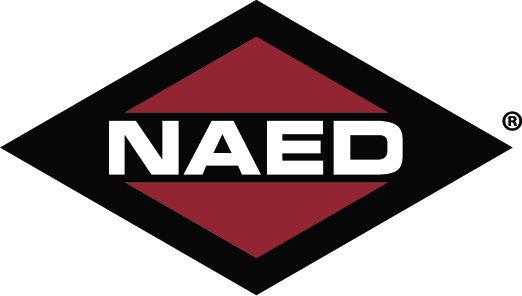Get the latest updates on important events taking shape in Washington, D.C.
∙ ∙ ∙ ∙ ∙
WHAT'S NEW?
November 24, 2025
We Need Your Help! Tax Testimonials and Site Visits
NAED recently received a request from Congresswoman Lisa McClain (R-MI), who serves as the Conference Chair which is responsible for communications and messaging for House Republicans. She requested testimonials from our members on how tax provisions in the recently passed reconciliation bill, dubbed the “One Big Beautiful Bill,” are having a positive impact on our businesses.
Some examples of provisions that may benefit your company include:
- 199A - Qualified Business Income (QBI) deduction for S-Corporations
- 100% expensing for new factories
- 100% expensing (bonus depreciation)
- Estate tax extension and expansion
Once received, NAED will share these stories with the Congresswoman, who will encourage other GOP lawmakers to attend public-facing site visits to electrical distributors. This kind of outreach will go a long way in helping tell the NAED story and create new relationships with lawmakers across the country.
To learn more, please contact Bud DeFlaviis at bud@naed.org.
Permitting Reform Update
The House Natural Resources Committee advanced Chair Bruce Westerman’s (R-AR) bipartisan SPEED Act, which seeks to accelerate permitting for energy and infrastructure projects amid rising power demand. The bill would narrow the scope of reviews under the National Environmental Policy Act (NEPA) and curb legal challenges, with supporters arguing the current process is too slow and unpredictable. It passed out of committee by a vote of 25–18 with backing from all Republicans and two Democrats, Jared Golden (D-ME) and Adam Gray (D-CA).
To attract bipartisan support, Westerman included an amendment negotiated with Golden to make it harder for future administrations to revoke already-approved project permits. Many Democrats said they supported the amendment, but argued it did not go far enough to counter Trump administration efforts to stall renewable energy projects that the Interior Department had blocked, such as wind and solar projects.
The SPEED Act would codify limits on environmental reviews set by a recent Supreme Court ruling and build on 2023 permitting changes by imposing strict timelines, narrowing when NEPA applies, and limiting who may sue. Democrats warned these measures would overly restrict public input and weaken environmental oversight.
Negotiations on the final language are ongoing, and Congressman Westerman is pushing House Leadership for a full House floor vote on the SPEED Act this year.
President Touts AI Deals
President Donald Trump used the U.S.-Saudi Investment Forum, held in Washington DC, to highlight major new agreements with Saudi Arabia on artificial intelligence, civil nuclear energy, and critical minerals. Alongside Crown Prince Mohammed bin Salman, the kingdom pledged to invest up to $1 trillion in the United States and pointed to more than $270 billion in private sector deals underway. While the White House offered few details, MP Materials announced a partnership with the Defense Department to support a new rare earths refinery in Saudi Arabia. Trump also said his administration is building what he called the world’s most advanced AI ecosystem, supported by a streamlined, “one-approval” permitting process.
Trump stressed that AI companies face mounting power needs for new data centers and said he has ordered rapid approvals for oil, gas, nuclear, and mining projects to meet demand. He directed EPA Administrator Lee Zeldin and Interior Secretary Doug Burgum to accelerate energy infrastructure and drilling permits, saying reviews should be completed within a month. Trump also suggested that companies building AI data centers could generate their own electricity and sell excess power back to the grid.
The forum produced a wave of corporate announcements deepening ties between U.S. firms and Saudi-backed AI ventures. Humain, a Saudi-supported AI company, unveiled deals with Amazon, Cisco, Adobe, and Elon Musk’s xAI to build massive data centers, including a 500-megawatt project. Additional partnerships involve gigawatt-scale computing initiatives such as Project Halo, while Amazon plans an “AI Zone” in Riyadh and training programs for 100,000 Saudi citizens. The administration framed these developments as part of its broader push to accelerate domestic AI deployment.
Want to print this out? Download the pdf here.
ARCHIVES
For more information, contact Bud DeFlaviis, NAED's Director of Government Relations.










